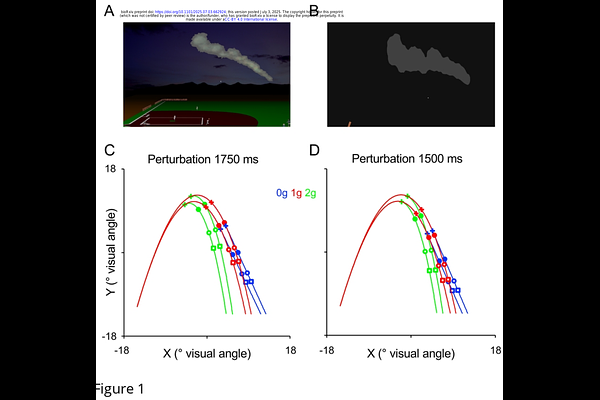Task demands and visual context naturalness modulate gravitational expectation during ocular tracking of temporarily occluded ballistic trajectories

Task demands and visual context naturalness modulate gravitational expectation during ocular tracking of temporarily occluded ballistic trajectories
Delle Monache, S.; Nastasi, P.; Paolocci, G.; Scalici, F.; Ingrosso, R.; Lacquaniti, F.; Indovina, I.; Bosco, G.
AbstractDuring ocular tracking of a target, contextual information provides useful cues to account for motion features the visual system is poorly sensitive to, like its acceleration. For example, the brain can rely on an internal model of gravity to intercept and track accelerated targets under gravity, and cues about the visual environment naturalness can facilitate its recruitment. Notably, in real life, these two tasks are often associated. Experimental evidence suggests that predictive information may be shared between the two tasks, albeit their concurrent execution can, in turn, affect the oculomotor performance. To gain further insight on how task demands and the naturalness of the visual context affect the weighting of sensory feedback and predictive feedforward information in ocular tracking, subjects tracked targets either congruent with gravity or perturbed during the trajectory with altered gravity. Targets were projected on either pictorial or neutral background, and, to enforce prediction, were occluded for variable intervals 550 ms after the perturbation. Sixty-nine participants were divided into two groups: one group performed only ocular tracking, the other also intercepted the targets. In general, subjects ocular tracking performance depended on the target acceleration level and the visual context, with effects of gravitational expectations being more evident with the pictorial naturalistic environment. This result reinforced the idea that gravity a priori information can be weighted based on the naturalness of the visual context. Another striking finding was that participants who only tracked the target showed systematic changes of the oculomotor performance with the acceleration level right after the perturbation, compatible with a strong reliance on gravitational expectation; instead, participants that also intercepted the target showed such systematic changes primarily after the targets occlusion, perhaps weighting more sensory information until then. Thus, concurrence of ocular tracking and manual interception seemingly influenced the temporal recruitment of internalized gravity information.